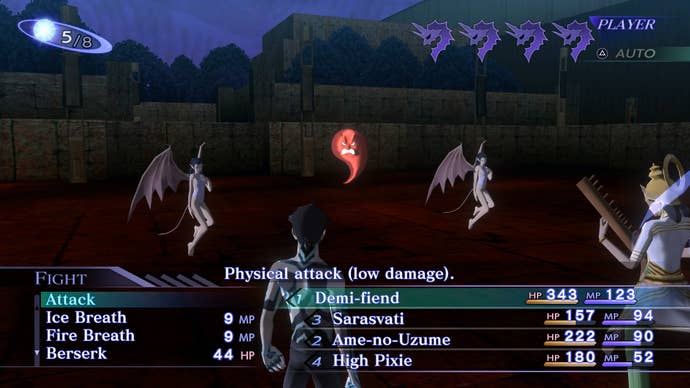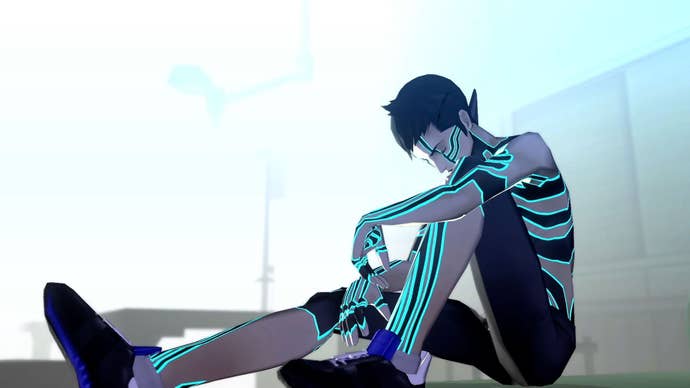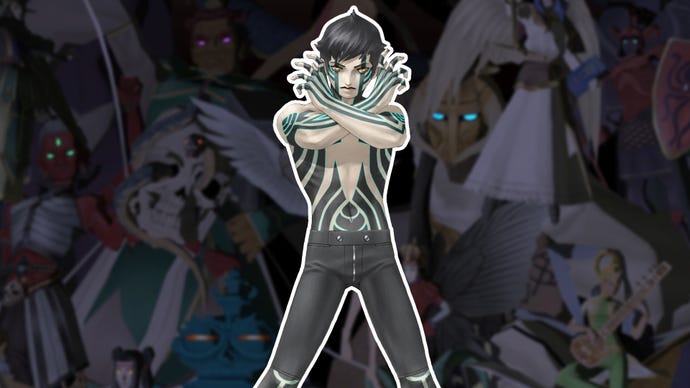One of my favourite RPGs of all time just turned 21 years old – and it’s as good today as it was in 2003
When a demi-fiend becomes a demi-friend – then you’ll have the power to kill god. Happy birthday, Shin Megami Tensei III: Nocturne.
It introduced one of the most interesting RPG battle systems outside the ‘golden era’ of Final Fantasy games. It had a soundtrack by Shoji Meguro inspired by both rock and metal from the 1980s, and hardcore dance and techno from the 90s. It had a mature, nihilistic story that drew from Gnosticism, Buddhism and other world philosophies. It presented cel-shaded graphics with style and confidence, and committed wholly to a minimalistic art style that has barely aged a day. It was the first Shin Megami Tensei (or MegaTen) game to release in Europe, and it remains one of the best games I’ve ever played.
Shin Megami Tensei III: Nocturne – or Lucifer’s Call, in Europe – hypnotised me from the second I saw the PS2 case in a rental shop one evening in 2005, when it first made it to these shores. A half-human teen boy, arms crossed in front of him and decked out in body decoration like something from Cyberdog, took the foreground, and Dante (from Devil May Cry, as the memes will have you know) stood behind him. I was hooked. It looked edgy, I’d just got into DMC, and I was really into all that mythological stuff because I was a teenage edgelord. I flopped my fringe out of my face and took the box to the cashier. I’d be back in just a few days to buy it outright.

Nocturne was a revelation. More mature and messed up than any of the other Japanese RPGs I’d played by that point, the game introduced a whole new continent of players to the brooding, gothic aesthetic that had, previously, been exclusive to Japan. This wasn’t your average ‘twink saves the day!’ RPG – it’s dour tone was underscored by a high difficulty ceiling, bosses that acted as skill checks and would mercilessly impede your path unless you learned how to play properly, and dungeons that delighted in your (literal) downfall.
For some Western gamers, softened by the slowly-relenting difficulty of games coming out of Japan, it was too much. Too obtuse or unwieldy. But for the committed nerds that prowled the forums of GameFAQs until the little hours, this was a labyrinth that concealed almost unbelievable treasures – a depth, both mechanically and narratively, that has aged as gracefully as its smooth, pretty graphics.
The story is fairly simple: the world has ended, and the devil has granted you the power of a demon. You, demi-Fiend, are one of few sentient beings capable of reshaping the world. And so forces being to amass around you – influencing you, coercing you, threatening you, manipulating you. As you gain power, they gain confidence in their vision for the final shape of the world, rebuilt in your image. Will you follow their ideals – visions of isolation, of social Darwinism, of stillness and singularity – or will you reject all their inner philosophies and forge your own path, instead?

The game was built to be a ‘journey into hell’. The developers intentionally riffed off The Divine Comedy and Apocalypse Now to mimic a maddening, apparently endless descent. You begin in a hospital in Tokyo as it was in the early 00s; blue skies, pleasant clean lines, an understandable world around you. But it’s no mistake you’re here, in a hospital ward, as you’re delivered kicking and screaming into a new world – into a new body! – as demonic parasites write and blossom within you.
From here, you wander into another world. And the developer makes it more aberrant and unrecognisable as time goes on. Parts of the world, as it’s held in stasis awaiting to be reborn, become warped and twisted. Biological and mechanical and abstract matter morph and shift and change. Gravity peels away from the surface and inverts on itself, and Tokyo becomes a vortex unto itself, a new sun beating like a heart at its centre. You look up, and you see the city as a ceiling above you.
You are trapped in this new hell. And the deeper into its mysteries you travel, the less recognisable it becomes. It’s an absolute masterclass in RPG pacing and world-building, and as you begin to leave the trappings of your former life behind and master the strange, Press Turn battles of this brave new world, you can feel yourself changing as a player, too. Getting smarter, stronger, more mature, more ruthless.

In the end, as you climb the final tower to confront the one thing that stands between you and shaping the new world, you feel like a new person. You’ve metamorphosed in this world. You’ve sat in the chaos of a hundred warring ideas and broken free of your chrysalis, and now you’re ready to stand your ground and birth your new world.
This is not a new idea in RPGs – ‘fighting god’ seems to be the end-game for the vast majority, when you really think about it – but framing it like this and having the stakes seem so impossibly high… it’s brave. It’s bold. It’s bonkers. Back in 2005, your other RPG options were the likes of Final Fantasy X, Dragon Quest VIII, Kingdom Hearts II; bright colours and boisterous characters, camp villains and perky sidekicks.
Nocturne eschewed all that, a difficult moody teenager of a game, and stood out for all the right reasons. It set the scene for the success of Persona 3 and 4, and launched Atlus on a trajectory that – even today – shows no signs of slowing down.
Shin Megami Tensei Nocturne HD Remaster is available now on PC, PlayStation 4 and PlayStation 5, and Nintendo Switch.









